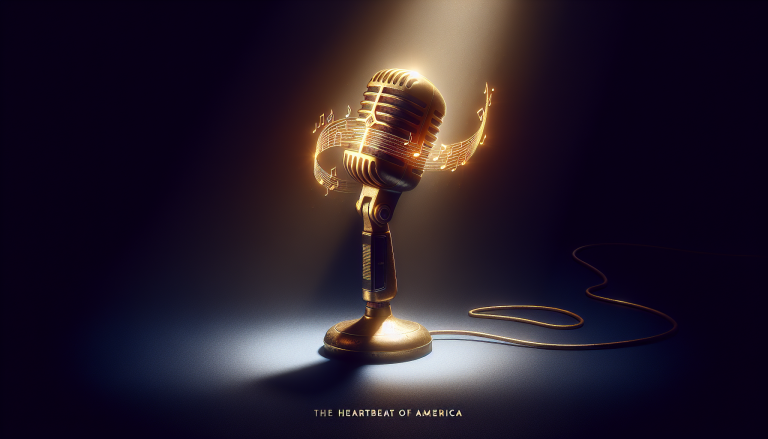The Heartbeat of America: A Journey into Blues Music

Blues music is more than just a genre; it’s the soulful narrative of the American experience, a rhythmic confessional that bends and sways with history’s deepest sorrows and triumphs. Born in the fertile delta of the Mississippi River and carved out by the trials and tribulations of African American communities, blues music is the raw, unfiltered voice of resilience and expression. To truly understand the essence of blues, one must dive into its origins and trace the rhythmic lines that connect it to jazz and R&B music, painting a vivid tableau of American music’s most visceral pulse.
Forged in the Fires of History
The roots of blues music are deeply entwined with the African diaspora, an echo of the spirituals, work songs, and field hollers sung by enslaved people in the American South during the late 19th and early 20th centuries. These were songs soaked in pain, hope, and a relentless search for freedom—sonic lifelines across the torment of bondage. As emancipation dawned, these musical traditions began to morph organically, incorporating the storytelling techniques and melodic structures of African musical heritage but shaped by the lived experience of struggle in a segregated, unequal America.
By the 1910s, blues began to take a recognizable form. The Mississippi Delta became a crucible for this burgeoning sound, characterized by its signature twelve-bar structure, the soulful bending of guitar strings, and a mournful, call-and-response vocal style. Here, legends like Charley Patton and Son House first wielded the guitar as an instrument of both heartbreak and defiance, setting the stage for blues to ripple outwards, transforming American music forever.
The Anatomy of Blues Music
At its core, blues is rhythm with soul—marked by a distinctive chord progression, usually the twelve-bar blues, which creates a cyclical, hypnotic groove. The genre’s hallmark is its expressive use of ‘blue notes’—flattened thirds, fifths, and sevenths—that evoke a tug on the heartstrings, a perfect musical mirror of blues’ intimate themes: hardship, love lost, joy found, and the gritty realities of life.
Instrumentation often centers around guitars—acoustic or amplified—harmonicas, pianos, and a rhythm section that keeps the groove relentless but fluid. What sets blues apart is the vocal delivery: a raw, impassioned voice that can sound as fragile as it does powerful. This is where blues connects deeply to jazz and R&B music, sharing improvisation, emotional storytelling, and a communal spirit that invites listeners into a shared human experience.
Champions of the Blues Legacy
Stepping into the spotlight, the giants of blues music are as iconic as the genre itself. Robert Johnson, often mythologized as the man who sold his soul at the crossroads, remains a towering figure whose haunting guitar riffs and poetic soul laid down the blueprint for future generations.
Then there’s Bessie Smith, the “Empress of the Blues,” whose voice blended vulnerability and strength, shattering racial and gender barriers during the Harlem Renaissance. Her recordings, like “Downhearted Blues,” are pulsating testimonies to blues’ capacity for storytelling and emotional depth.
Muddy Waters electrified the blues in the post-war era, transforming it from a rural sound into the Chicago Blues phenomenon. His gritty, amplified style powered by electric guitar innovations inspired the British Blues explosion and eventually rock ’n’ roll. Not far behind stood Howlin’ Wolf, whose deep growl and commanding presence injected a primal edge into the music, while Willie Dixon’s songwriting prowess penned classics that are still the backbone of blues and R&B sets worldwide.
Sonorous Milestones: Songs and Albums That Echo Through Time
Certain records and songs in blues’ vast catalog are indispensable landmarks on the map of American music. Robert Johnson’s “Cross Road Blues” and “Hellhound on My Trail” resonate with otherworldly mystique. Bessie Smith’s “St. Louis Blues,” penned by W.C. Handy—the “Father of the Blues”—remains a standard that bridges blues with early jazz orchestrations.
Muddy Waters’ album “Electric Mud” and songs like “Mannish Boy” captured the electricity of urban blues while also foreshadowing new paths into soul and rock territory. Etta James’ “At Last,” an iconic track bridging blues and R&B music, showcases the genre’s emotional versatility—its ability to be both heartbreakingly intimate and jubilantly uplifting.
These sonic jewels are not only masterpieces of performance; they are cultural artifacts—time capsules that preserve the emotional rawness and social currents of their eras while inspiring millions across generations and genres.
The Enduring Pulse: Blues’ Lasting Effects on Music and Culture
Blues music’s heartbeat pulses at the core of much of modern American music. Jazz, with its improvisational complexity and harmonic sophistication, owes much of its expressive vocabulary to blues scales and phrasing. R&B music adopted the blues’ emotional candor and rhythmic swagger, evolving into a genre that drove soul stardom and later influenced hip-hop and contemporary pop.
The blues is also a crucial cultural document, reflecting the African American struggle yet celebrating survival, creativity, and joy. Its influence extends beyond music into fashion, language, and art, marking a transformative impact that transcends mere entertainment.
Contemporary artists continue to channel the blues’ spirit. From the blistering guitar work of Gary Clark Jr. to the soulful vocals of Brittany Howard, blues remains a vibrant, evolving force—its legacy carried forward by musicians who understand that blues is not just music but a living history, a spiritual language of the human condition.
Blues music invites us to feel deeply—to groove on the edge of night’s shadows and climb back into the light with every note. Its rhythm is the pulse of American music itself: born from pain, raised on hope, and forever echoing in every soulful chord across genres that followed. It is a testament to the power of sound to transform struggle into beautiful, unbroken song.